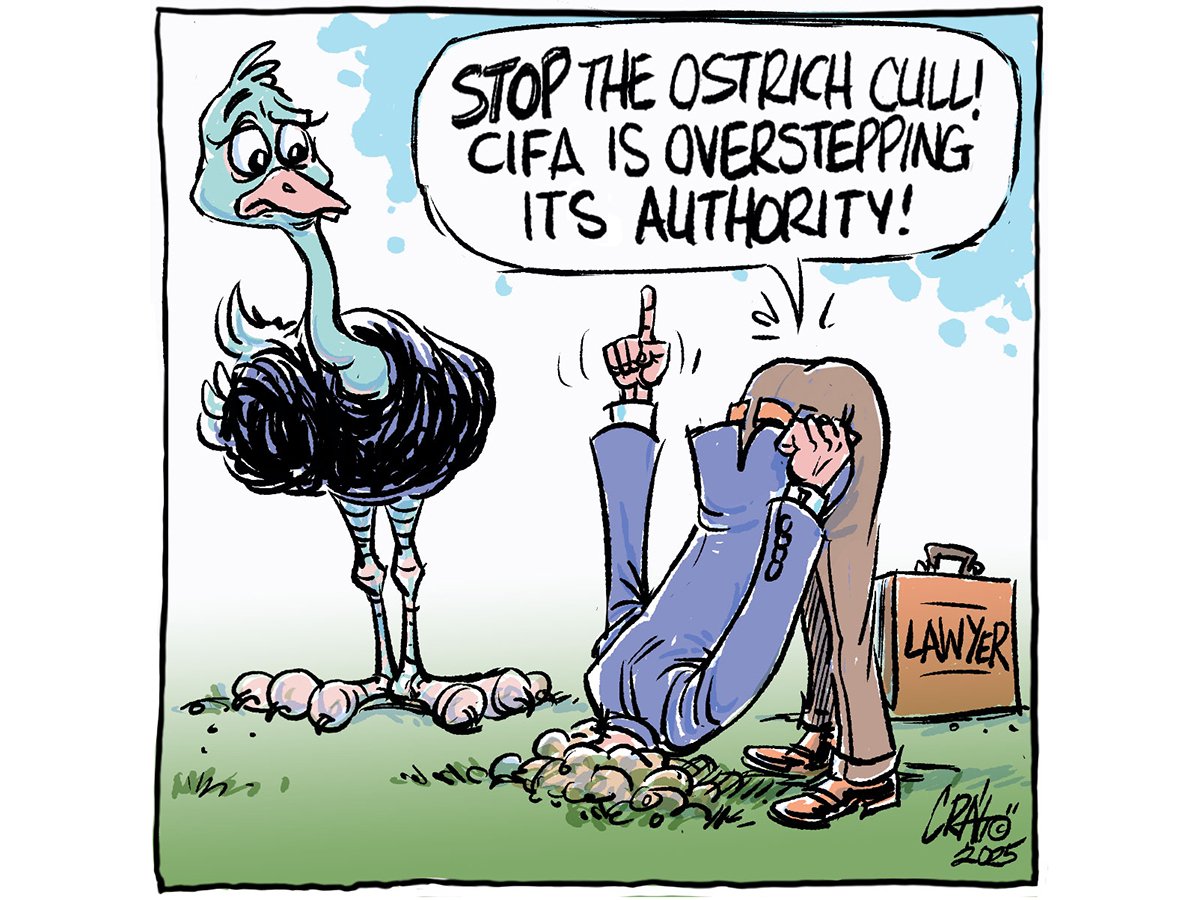After watching from the sidelines for a couple years, I’m ready (I think) to experiment with intercropping.
Intercropping certainly isn’t a new idea. It probably reached its height of popularity in Western Canada with peola, a mixture of peas and canola.
The peas fixed nitrogen for the canola while the canola gave the peas upright stems on which to cling.
There was never a large peola acreage, and the practice pretty much ended when herbicide tolerant canola came along.
These days, one of the most interesting combinations is chickpeas and flax.
Read Also

The Canadian Food Inspection Agency’s animal health efforts require producer support
Livestock producers should be concerned by how an ostrich farm is using crowd funding to help it defy a Canadian Food Inspection Agency order to destroy more than 300 birds.
Sulfentrazone (Authority) is now registered on both crops, and this can provide good control of kochia, buckwheat and pigweed. What’s still lacking is a way to control brassica weeds in the combination.
Lana Shaw of the South East Research Farm at Redvers, Sask., has been working with the chickpea–flax combo by putting chickpeas down the fertilizer tube with flax off to the side. The chickpeas go in deeper, but everything is in the same row.
It appears the flax is able to use a considerable amount of the nitrogen that the chickpeas fix, but further study with nitrogen markers will be needed to know for sure what’s happening between the two rooting systems.
The chickpeas potentially benefit from having another type of plant in the canopy to help stop the spread of disease. Chickpeas, particularly kabulis, typically require numerous fungicide applications to ward off ascochyta. It’s hoped intercropping will negate the need for a couple of fungicide applications.
Chickpeas and flax are later maturing and shatter resistant, so harvest timing has the potential to work out well.
Colin Rosengren of Midale, Sask., has been growing a chickpea-flax intercrop on a field scale, but he has used a different approach. Rather than plant both crops in the same row, he alternates between two rows of chickpeas and two rows of flax.
This requires messing around with the drill tubes, and not everybody will be interested in that sort of time investment at seeding time. For that matter, not everyone will have the patience or ability to separate the crops after harvest.
Most producers aren’t interested in any cropping practice that will take extra time at seeding and create extra headaches at harvest. At least they aren’t interested unless substantial benefits can be demonstrated.
But what if you can get higher total yields without the use of nitrogen for the flax crop? What if you can eliminate a couple of fungicide applications? What if the flax also helps the chickpeas mature a bit earlier, potentially missing a frost?
Not only will the intercrop be better financially, it will also be viewed as more environmentally sustainable.
Rosengren is a partner in Three Farmers, the company that produces and markets camelina oil.
It also markets crunchy, roasted chickpeas as a snack food and topping. Each package has a trace back code. The packages that link back to Rosengren include an explanation of his intercropping. It’s a great sustainability message.
I haven’t asked crop insurance yet how it views intercropping. Perhaps if the crops are in separate rows, it will consider half the acreage as chickpeas and half as flax. It should be an interesting conversation.
I’m also preparing myself for people driving past the field and wondering what the heck is growing there.















